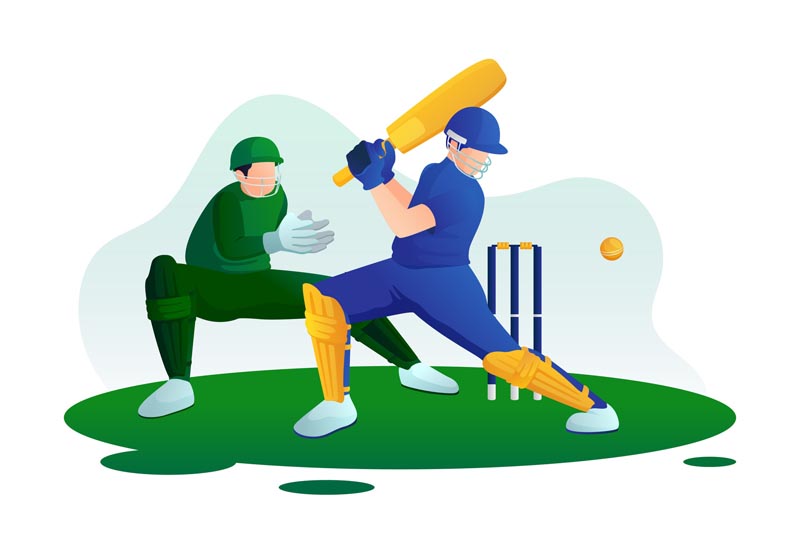In 1992, India was on a tour of South Africa. Their first test match was in Durban, and Sachin Tendulkar was run out by Jonty Rhodes, who was playing for the first time. This was a big moment for India’s first innings and all of cricket.
Rhodes’s attempt to get out by running out of the base led the third umpires to use TV replays for the first time. At last, a red light flashed on the TV, and Sachin Tendulkar was told he was out and had to return to the locker room. The moment in cricket that changed everything:
Artificial intelligence and “Power Bats.”
The Durban Test was the start of another technological change in cricket. Artificial Intelligence and Data Analysis tools run the world we live in now, and cricket is taking advantage of these technological advances.
During the 2017 ICC Champions Trophy, a bat sensor made by Intel was put on top of the bat handles. This was a sign of the next generation of cricket bats. Willow is getting new and interesting technologies, which makes it a “Power Bat.”
The unique and lightweight sticker will be put on the shoulder of the bat. This will allow the broadcaster to show different kinds of data analytics, such as speed on impact, a twist on impact, and the quality of the shot played by the batsman.
It would show the percentage of the ball hitting the willow near its sweet spot. This tool is available through the mobile app and uses AI, the Internet of Things, and Advanced Analytics. This would assist the cricket coaches in watching the batsman and telling him exactly what he needs to do to improve.
Cricket and Data Analytics
Data mining is a tool that sports management committee members have been using to pick the best players for the team. The Indian cricket team and analysis have used data mining to determine how the players should be put in order.
The association mining rule is used on performance data, such as batting average and bowling average, that comes from secondary sources and is about Indian players. The plans for how the ICC will use predictive analytics in cricket have been laid out in a report from CIO.com. ICC’s main goal is to give fans real-time and impressive stats through their app and website. This is done by using data analytics.
ICC has been using the SAP HANA Cloud Hosting and the SAP Lumira software to analyze the statistics on the scorecards, player productions, player profiles, and many other important data. Every 20 seconds, this entire information is changed. SAP and ICC looked at the cricket data to determine how important each bowler is to winning games.
SAP and the ICC have utilized the data to make interesting statistics for fans and help teams improve their strategies and how they play on the field, increasing their chances of winning. The key to this is predictive analysis, which can predict what will happen by looking at patterns in the data and considering many different factors.
Data-Driven Strategies
Developing strategies is much easier with the rise of videos and data analytics. The analysts help the team determine the other team’s strengths and weaknesses. The analytics can find many small details, such as pitch maps, seam movements, areas on the pitch, and many more. With so much information, planning is easier, and everything can be implemented on the field.
Real-time insights are becoming more and more important when it comes to making plans. Data analytics have led to more people watching the game and even helped with its business side. Based on what viewers have done in the past, broadcasters usually develop strategies for making the game more interesting and fun for viewers.
Previous Advances in technology
Since the technology revolution began, cricket has always been open to new ideas, like making live broadcasts, and the game itself has become more fun and influential over time.
The technologies have stood the test of time and are still used to run the DRS, or Decision Review System. Cricket on TV is a great experience thanks to new technologies like the Snickometer, Hawk Eyes, Stump Cameras, LED Bails, and many others.
In the middle of the 1990s, an English computer scientist named Allan Plaskett came up with the Snickometer. It is now a very important part of deciding what to do. The size difference helps the umpire determine whether the ball has hit the bat.
Hawk Eye technology tracks the ball visually and shows a record of its statistical path. It is now a very important part of LBW decisions. With each year that goes by and the introduction of SpiderCam and Drones, it gets better to watch cricket. For Advanced Pitch Analysis, the Drone Camera was used for the first time at the ICC Champions Trophy in 2017.



